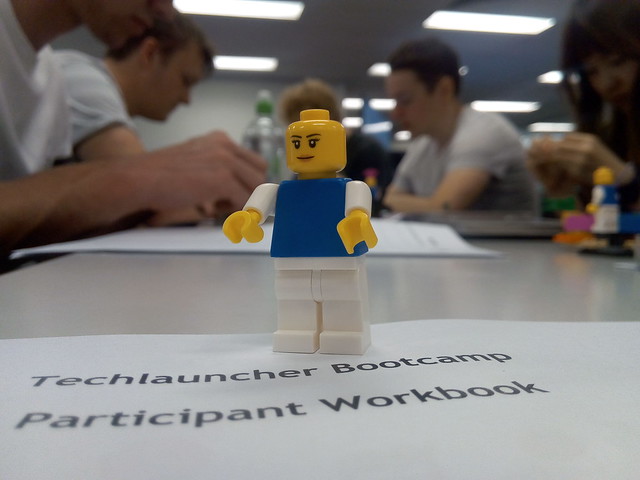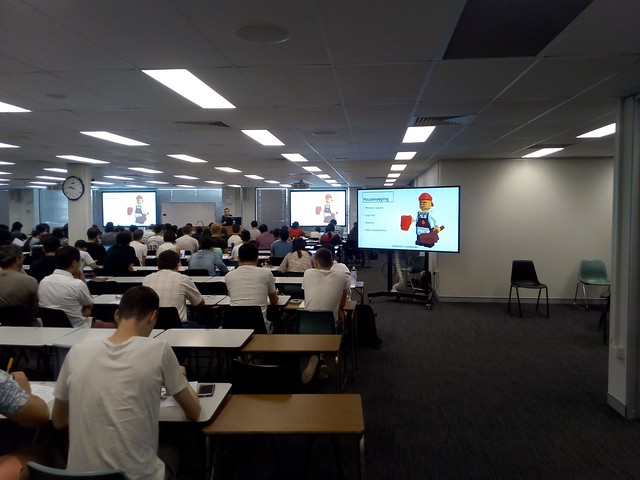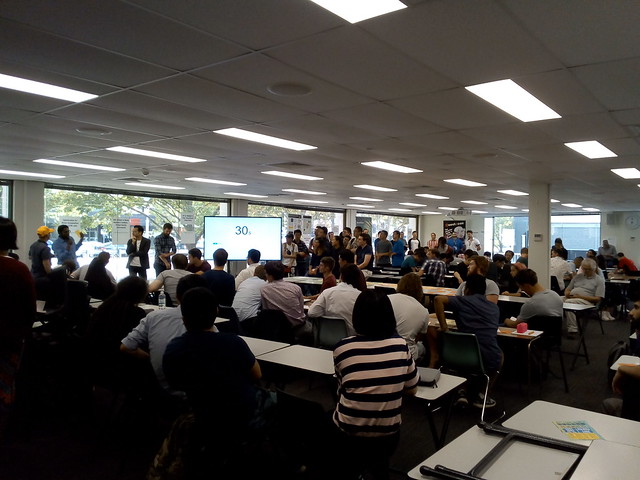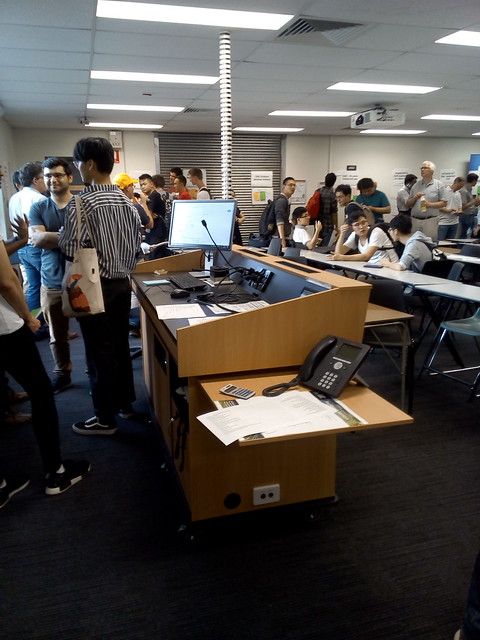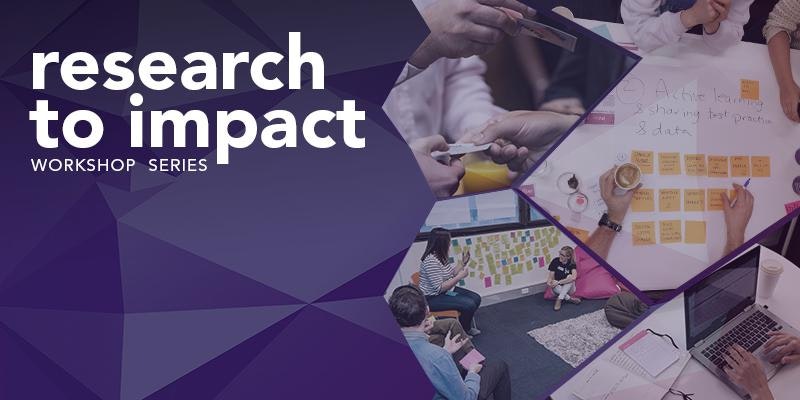I have been asked to write a short opinion piece on the future of higher education in Australia, so I thought I would draft it here:
The future of Education: it’s the Internet stupid!
Higher education now has more than 50% of courses delivered online, and this is increasing. Many qualifications are delivered entirely online. What are the implications for this for the professions? In the future, qualifications may be more ‘deciCredentials'.
It is an interesting time to be teaching at an Australian university.
Business is
booming, with international record enrollments. However,
international enrollments are subject to the vagaries of international
politics. At the same time, Australian
industry and
government are urging universities to produce work-ready graduates. There is also concern over
creeping credentialism.
Imagine a future where you can begin your higher education at secondary school, then have the choice of a government vocational institution, a private college, or a university (public or private). Imagine if you could study online while working, or looking after the family. Imagine you only need to attend campus for hands-on instruction, which may be a few days a year, or never. Imagine if you could present evidence of your existing skills and knowledge, thus avoid unnecessary courses. Imagine if you could enroll in multiple institutions and even study overseas, without leaving home. Imagine if you could study via your smartphone.
This future is here right now. In 2011, at the urging of the institution where I was a part-time lecturer, I signed up for some teacher education. This was to take six months, on the other side of the campus. Instead, I spent the next six years, studying on-line at three institutions, 10 km, 1,000 km and 13,000 km away. I never attended a class at any of these institutions, studying via my laptop and
smart phone from wherever I happened to be. From this mash-up of courses, I was able to gain a
graduate certificate, a
vocational certificate, and a
Masters Degree. This is the new normal of higher education: on-line and global.
Australia has a higher education system which is already setup for this bespoke on-line education. The system extends from upper
secondary school through trade certificates to advanced post-graduate university degrees. The
system accommodates everything from apprenticeships for plumbers to
research doctorates for computer professionals. The system has about one
hundred government-owned universities and TAFEs, thousands of private
registered training organizations and one
for-profit private university. Providers are offering higher education at school, on-line and via a smart phone.
Today's students will have many careers and so
need a general education, regularly topped up with short intensive
training and skills recognition. But we do not need to Uberize higher education to do this. We just need to free up some of our thinking about what education is and provide the right incentives for students and institutions.
One way to a better future would be for university Professors to swallow their pride and learn from the VET sector. Australia's elite research universities could also learn from the approach already taken by Australia's on-line teaching universities.
University
qualifications can be nested so that a student can complete a vocationally
useful first qualification in less than the three years required for a
Bachelor Degree. Students can instead start their study with a certificate or diploma, of six months to a year. They can then top this up with an advanced diploma or degree. Institutions can be given financial incentives to offer nested qualifications and students given incentives to take them.
Universities can require staff to obtain a
formal educational qualification, as the VET sector does, so academics
know how to teach. University academics have been reluctant to do this, and a level of compulsion may be required, with government funding and accredited being withdrawn from institutions without qualified staff.
University qualifications can be defined, as they are in the VET sector, regarding knowledge and skills required and how those skills can be
demonstrated, so students can present evidence instead of
undertaking a course. Knowledge and skills definitions can be
standardized between programs and universities, so students need not repeat the same work, over and over. As in the VET
sector, courses can be on-line by default. Where a skill needs to be learned hands-on, students can
have the option of learning on-the-job, rather than on campus. Such a system would be very complex to introduce Australia wide by regulation, and instead funding incentives could be used to promote consortia to undertake this approach.
Background
Australia's first university, the University of
Sydney, was founded in 1850, with the dual purposes of cultural
enrichment and economic advancement:
"Whereas it is deemed expedient for the better advancement of religion and morality and the promotion of useful knowledge, to hold forth to all classes and denominations of Her Majesty’s subjects resident in the Colony of New South Wales, without any distinction whatsoever, an encouragement for pursuing a regular and liberal course of education ..." University of Sydney Act 1850 (UK), Public Statutes of New South Wales
Distance education commenced at the
University of New England in 1955. There were misgivings over "
Degrees by Correspondence", much like today's concerns over Internet degrees. However influenced the design of distance, open and on-line universities around the world:
"We had been fortunate in attracting to the Open University in 1969, for a spell of three months, Mr Howard Sheath, who had been Head of the External Division of the University of New England for many years." (Perry, p. 59, 1976).
Australia's first short vocational course was two hundred years before this, aboard the first fleet, with a Royal Navy officer teaching
reading to the convicts on their way from England (
Whitelock, 1974).
Tertiary education in Australia today is provided by 43 universities, 40 state government technical and further
education (TAFE) institutions and more than 4,000 Registered Training Organizations (RTO). The TAFEs and mostly probate RTOs are collectively referred to as Vocational Education and Training (VET).
Australian Qualifications Framework Levels 1 to 10
In 1995 the
Australian Qualifications Framework (AQF) was introduced to fit the education provided by government and private institutions, schools, VET and universities, into one system. The AQF has
ten levels, from 1 (to prepare for a first job), to 10 (doctoral degree).
Levels 1 to 3 of the AQF are offered by VET. Universities, and VET offer the AQF middle levels, 5 to 7 awarding Diplomas, Advanced Diplomas and Bachelor Degrees. The graduate levels, 8 to 10, Graduate Certificate, Masters and Doctorate, are offered mostly by universities.
VET institutions offer nationally standardized qualifications. There are almost 1,500 qualifications, built from 17,000 units
of competency. Units of competency can be used in multiple
qualifications, with the units "Lead and manage organizational change"
(BSBINN601) used in 28 qualifications. Each unit of competency is
defined in terms of the outcome and assessment. While the qualification and unit definitions are standardized and public, the method of
instruction and course materials are up to the individual institutions. Even so, the units of
competency are interchangeable between institutions, with students able
to obtain credit from one institution for units completed at another.
Universities currently offer less standardized qualifications. Unlike the VET
sector, each university designs its own degrees and courses. Some universities offer hundreds of different degrees, made up of
thousands of courses, none of which are offered at any other institution. A student transferring between universities will be offered some credit for previous study, but will likely not be granted credit for all their work, due to the lack of standardization.
A level of degree standardization is imposed by external accreditation and professional bodies,
such as the
Australian Computer Society. However, the accrediting body only specifies what needs to be broadly covered in a program.
Open Universities Australia (OUA), a consortium of Australian universities, offers 61 degrees, 101 post-graduate programs and more than 1,300 courses. Students of OUA can select courses from multiple universities in the consortium and credit these to a degree from one.
Shorter Courses
A Bachelor Degree from a university requires three years full time study. This is usually assumed to require twice as long for part time study, but students typically take longer. That is a very long time between enrollment and being able to present a qualification to a prospective employer.
The VET system typically offers certificates, requiring
3 to 4 months full time study, which may be nested with a longer diploma or advanced diploma. The student completing a certificate at one institution can apply to another for further study, with all completed work being counted, due to national standardization.
VET also provides for "Recognition of Prior Learning" (RPL), where a student presents evidence of already having the knowledge and skills required. This can considerably shorten study time. As an example, I obtained 80% of a Certificate IV in Training and Assessment, based on my prior university education and teaching experience.
RPL is less common in the university sector than VET. However, recognition of forms of learning outside formal courses is becoming more common. Students may be required to gain experience in a workplace, providing evidence through a journal, project report, or reports from supervisors. This apprentice or intern approach is common in VET vocational programs and some university professional degrees in health care and engineering.

